Can 11-Year-Olds Lift Weights? What Age to Start Strength Training
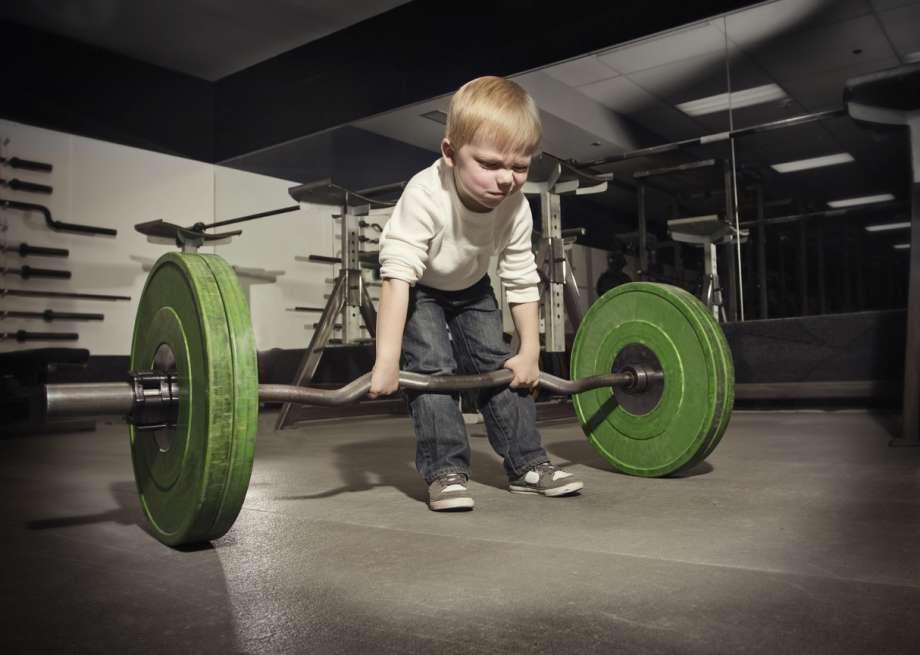
If you have a young athlete in your home, chances are you’ve had quite a few discussions about fitness, health, exercise, etc. And if you have a parent or older sibling that hits the gym or uses home workout equipment, there may be an interest in weight lifting.
Weight training is designed to increase muscle bulk. To build muscle mass, a person lifts weight loads for a few to several repetitions taxing the muscles and making them stronger over time.
Weight training or resistance training has many benefits for the participant. Weight training, when done correctly, builds lean muscle mass, strengthens muscles, bones, and joints, and helps maintain a healthy metabolism.
The caveat is that while weight training is an excellent type of physical activity for older adolescents and adults, it is not recommended for young adolescents, tweens, or children.
Related: 8 Fun (and Cheap!) Family Fitness Activities
If you have a budding athlete at home or a teen interested in starting a training program, this article will help you sort out what is safe, go over the proper techniques to support your child’s growth, and help them build muscle strength safely.
Resistence Training vs. Weightlifting
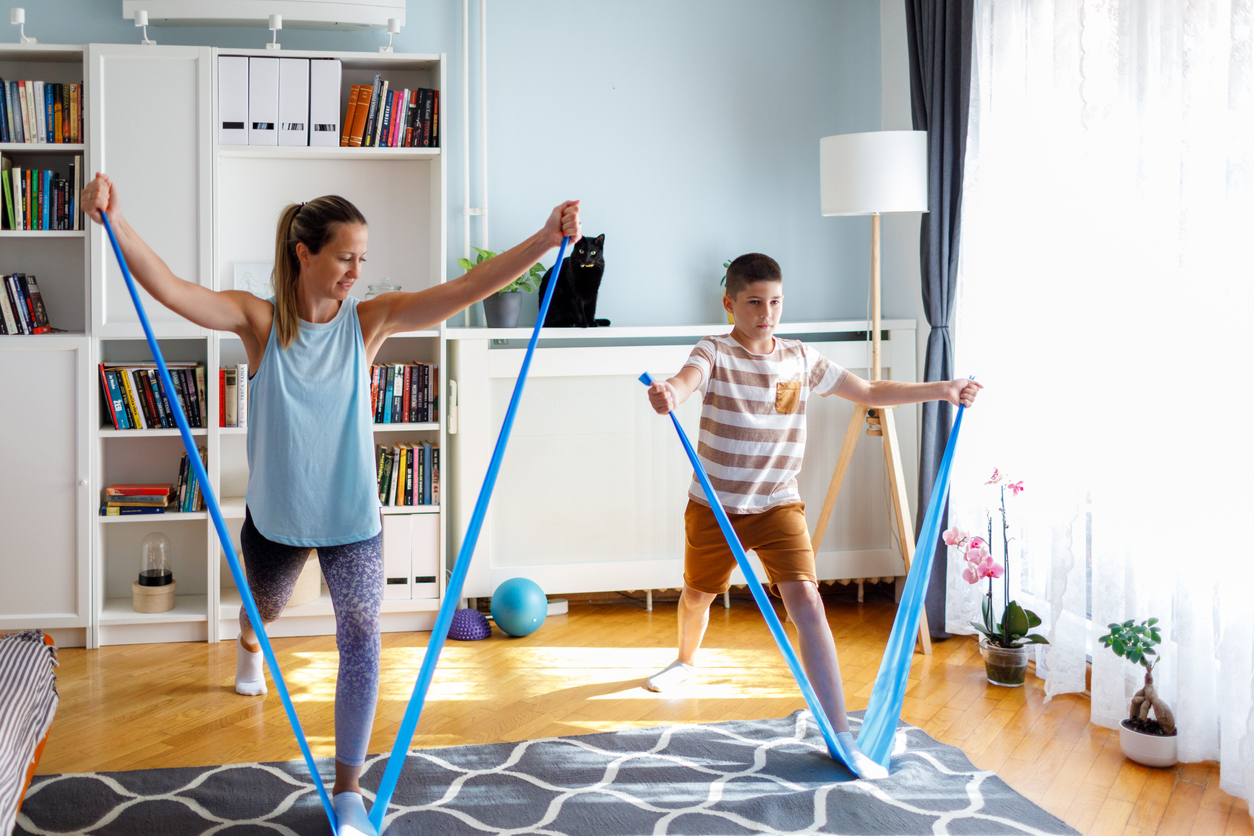
Weightlifting is a type of resistance training, but not all resistance training is weightlifting. Instead, weightlifting uses physical weights to create additional resistance. Examples of weights are barbells, medicine balls, kettlebells, machines, dumbbells, and free weights.
Resistance or strength training means creating resistance that the body’s muscles must work against. Resistance training can be accomplished using a person’s body weight with no additional weights added. For example, push-ups and chin-ups are examples of body weight resistance training.
Modest resistance and strength training to strengthen muscle groups and support lean muscle mass and athletic performance should be taken on a case-by-case basis with your child or teen’s pediatrician, coach, and, when appropriate, athletic trainer.
Weightlifting in the form of powerlifting and bodybuilding is not appropriate for children or teens. Heavy lifting and training put children and teens at risk of injury.
Shari Nethersole, a physician at Children’s Health Hospital in Boston and professor of pediatrics at Harvard Medical school, says, “This (weight training) isn't a good activity for growing children because it can cause injury to the growth plates of the bones. Since the bones don't complete all of their growth until late in adolescence, weight training should be avoided until after the teen years are over.”
What Age is it Safe to Start Lifting Weights?

So, before your tween hits the weight room, the big question is, at what age is it safe to let your child start lifting weights? As mentioned above, any resistance training classified as weightlifting that requires a significant amount is unsafe for children or teens.
However, most typically developed, healthy children can engage in strength training or resistance training using their own body weight as young as 7 or 8 years old.
Additionally, under proper supervision,younger children may even be recommended to use items like resistance bands or light weights. For example, my eight-year-old’s gymnastic coach recommended he use 1-pound weights and perform a few reps to build wrist strength.
If your child indicates they are interested in starting a strength training program, it is essential to consult a coach or personal trainer who is experienced in working with children.
Most tweens and teens begin showing interest in their physical fitness due to joining organized sports or as they enter high school and have peers working with weights.
Whatever the case, it is important to consult a professional because it is not simply a matter of scaling down an adult program or using lighter weights. Working with a trainer ensures your child learns proper form, what is recommended and not recommended for their age and body type, and tips to prevent injuries.
Teens and teens can engage in lightweight, multiple-repetition strength training when adequately supervised.
Safe Body Weight Exercises for Kids
Before your child begins using weights, they can try many safe bodyweight exercises. The American Academy of Pediatrics and the Department of Health and Human Services recommend that school-age children participate in a minimum of 60 minutes of physical activity daily.
Bodyweight Exercises for Kids
- Squats
- Push-ups
- Pull-ups
- Chin-ups
- Sit-ups
- Lunges
Benefits of Strength Training for Kids
Physical activity and strength training have numerous benefits for children and teens. Dr. Nethersole points out that strength training improves sports performance and has been shown to decrease the risk of injury. In addition, it can be helpful regardless of the child's sport and improve bone health and strength, which is particularly important for pre-adolescent and adolescent girls.
Additional benefits of strength training include increased self-esteem, coordination, balance, gross motor control, and endurance. In addition, strength training can raise a person’s metabolism, decreasing obesity and contributing to a healthier heart. It also promotes bone and joint health.
The American Academy of Pediatrics and the American College of Sports Medicine recommend strength training for children eight and older as part of an overall fitness routine.
In addition to strength training, children should participate in aerobic activities like running, swimming, or sports and stretching exercises like yoga. They should always include a warm-up and a cool-down in their routine.
Strength Training and Weightlifting Tips for Beginners
Here are important tips for kids who want to start strength training on how to not get injured and design an appropriate workout program.
1. Warm-up before lifting
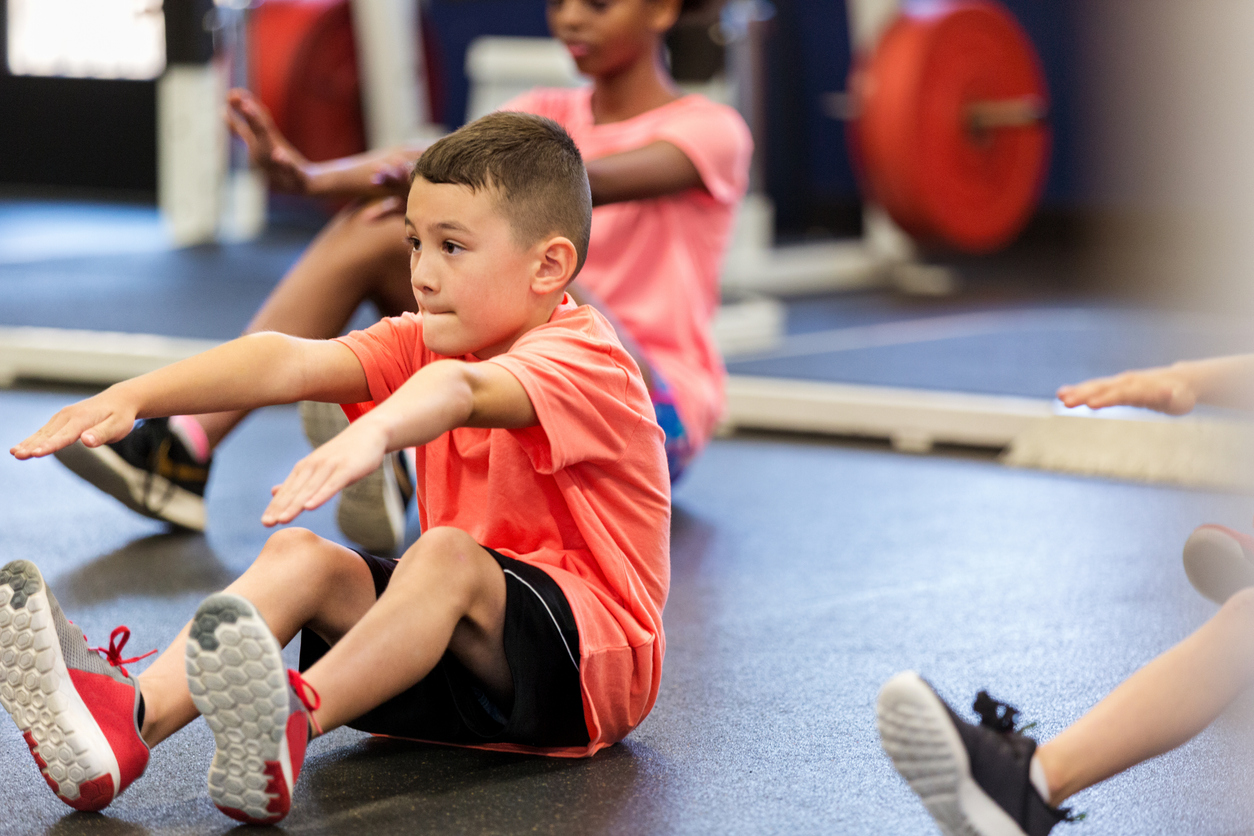
Always warm up. An aerobic activity, like a 5-minute jog in place, will increase blood flow to your muscles and prime them for a good workout. Kids might also enjoy skipping rope, jumping jacks for a few minutes, or dancing.
2. Limit your workout to no longer than 15-20 minutes
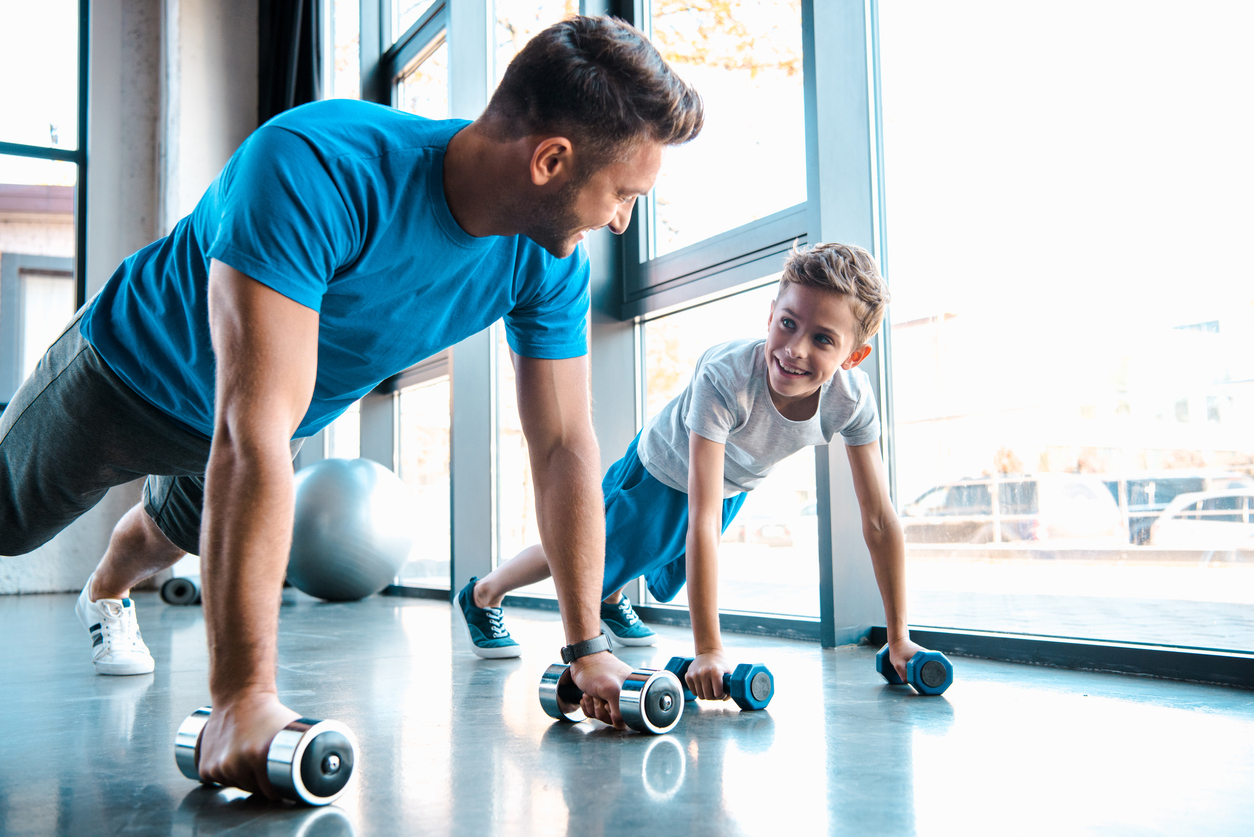
Kids under 11 shouldn’t do any intense workout for more than 15 to 20 minutes at a time without rests. Teens, especially teen athletes, may be able to go longer but consult their physician or a professional trainer first. Longer sessions may not lead to better results and may increase your risk of burnout and muscle fatigue.
3. Start with light weights
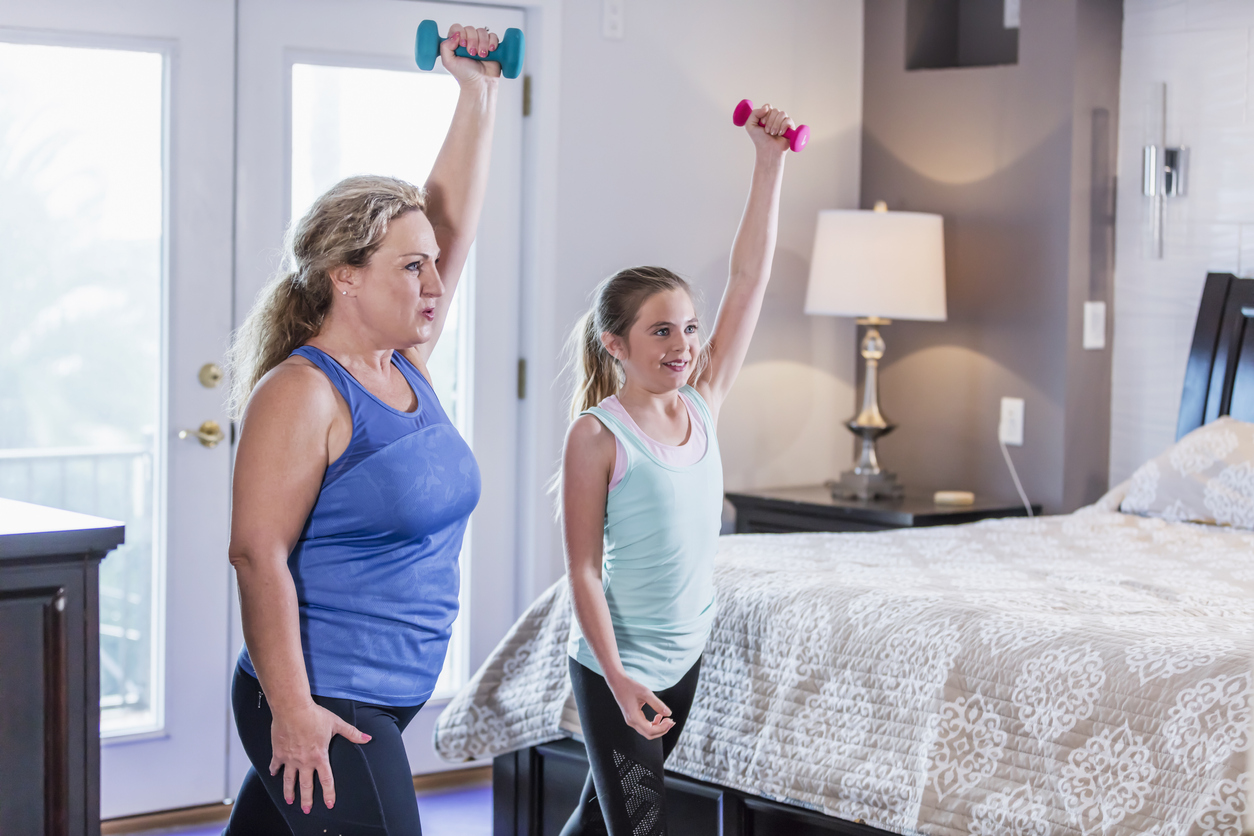
Beginners should start with a weight that they can lift 10 to 15 times with good form.
- Gradually increase the weight. When you can easily do the recommended number of sets and reps, increase the weight by 5 to 10 percent. Before doing a full workout, perform some sample exercises first to ensure it is the right weight for you.=
- Rest for at least 60 seconds in between sets. This helps prevent muscle fatigue, especially for beginners.
- Gently stretch your muscles after your workout. Stretching can help boost your flexibility, ease muscle tension, and reduce your risk of injury.
- Rest a day or two in between workouts. Resting gives your muscles time to recover and replenish energy stores before your next workout.
For more fitness tips for tweens and teens here are some strategies to help motivate teens to stay active.

